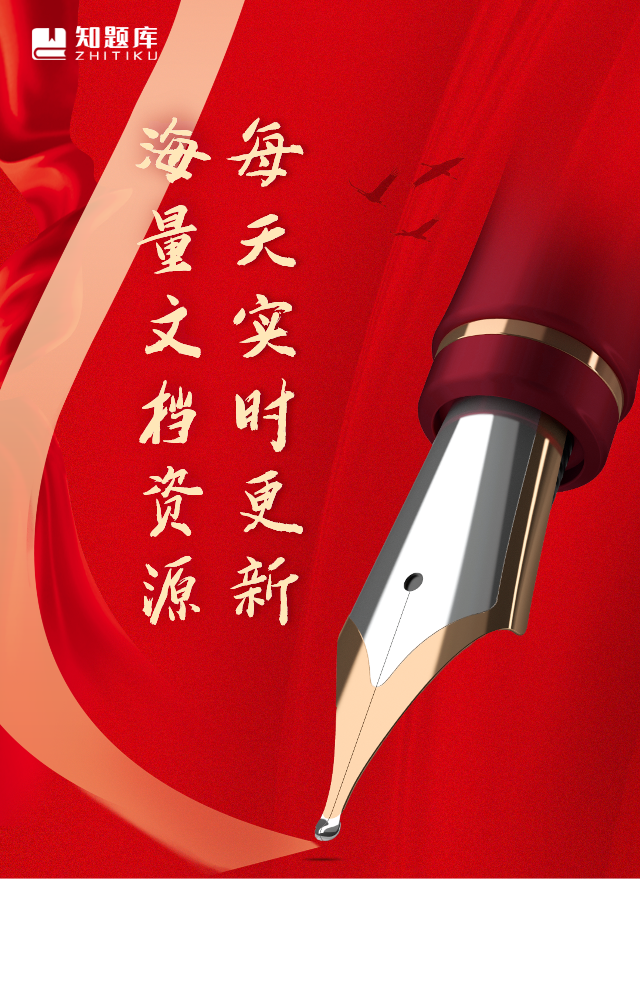UBS Economics-APAC Economic Perspectives _Can India be the next China_ Wa...-109915757
VIP专享
ab
APAC Economic Perspectives
Can India be the next China?
In the past couple of years, the economic fortunes and outlookfor China and India was
divergent. China’s economic recovery has been weak after the pandemic while India’s
has been strong. China is also facing many structural challenges including a rapidly
aging population while India has a relatively young and rising labour force and a far
friendlier external environment. Many investors ask: Can India be the next China?
We think this question is not simply about whether India can grow rapidly over a long
period of time and become as large and as rich as China today. That is not difficult to
answer – with a population already larger than China’s, India’s economy will become as
large as China’s is today sooner or later. This report provide a framework for the
following implied questions: 1) can India become a manufacturing powerhouse like
China and, potentially, export like China; 2) can India’s domestic market grow like
China's did in the past two decades, with the rising middle class absorbing an increasing
amount of global consumer goods and services; and 3) will India’s growth have similar
implications for the global commodities and energy markets as China's has had?
With a relatively small base, India is unlikely to seriously challenge
China’s overall manufacturing position soon. However, India has some potentially
favourable conditions for rapid growth in manufacturing including abundant cheap
labour, improving infrastructure, policies to attract foreign investment and a mostly
favourable international image. More importantly, India has a large domestic market
that is now equivalent to China’s around 2006-2007, which will be the key to rapid
manufacturing growth in the years ahead. In this process, India stands a good chance of
closing the gap with China and taking some market share. For details on specific sectors
that could grow faster, see Asia's supply chain shifts.
India’s doubled in the past decade and UBS expects India to
overtake Japan in 2026 to be the 3rd largest consumer market. If India’s consumption
grows at a similar pace as its GDP, the country’s domestic market size could reach
China’s current level many years before its GDP does. India’s household saving rate is
relatively high (though lower than China’s) and household leverage is moderate, but we
think the most important driver for sustained consumption growth is high-quality job
creation. As India grows, demand for modern durable goods and automobiles will likely
grow even faster.
China has had an enormous impact on over
the past two decades. India is already a large oil and coal importer but we think it’s
unlikely to see a similar demand growth from India in the coming years. India’s economy
is less focused on industry than China’s has been and its growth is unlikely to be as
capital- and energy-intensive. India’s own resource availability and different
urbanization pattern also means the country is unlikely to follow China’s past path in
imports of base metals such as Iron ore.
This report has been prepared by UBS Securities Asia Limited. !"#$ %$&'&%$&(! !) *+&) )&#%(#+#,
-./012-.3-.456789-5.5.9:;*18.9-989-<;;=;86/:;<-;>?1@0-=:;2@A+B#,@;3-.5.?83;CD
China
$E
Economist
wang.tao@ubs.com
+852-2971 7525
$F
Economist
tanvee.guptajain@ubs.com
+91-22-6155 6070
FG
Economist
S1460516050002
jennifer-a.zhong@ubs.com
+86-105-832 8324
E
Economist
S1460524050003
grace-zc.wang@ubs.com
+86-105-832 8335
!H
Associate Economist
nihal.kumar@ubs.com
+91-22-6155 6059
I%I 19 August 2024 ab 2
&D%&J
%K
In the past couple of years, for China and India
was divergent.After the pandemic, China’s economic recovery has been weak while
India’s has been strong. China is also facing many structural challenges: the country’s
labour costs have risen sharply while its working age population and total population are
declining; recently, foreign direct investment (FDI) has shrunk to low levels, national
security concerns are hurting China’s trade and investment links; and local governments
are facing fiscal difficulties in sustaining infrastructure investment. In contrast, India has
a relatively young and rising labour force, the government has been improving
infrastructure and the business environment, foreign investors are interested in coming
to India, and it faces a far friendlier external environment than China.
Many investors ask J&JLM
JD To be clear, when we discuss India potentially becoming a manufacturing
powerhouse, we are not talking about it replacing China as the world’s factory now or
soon. That is not feasible as China currently accounts for roughly one-third of global
manufacturing while India is only about 3%. The real question is whether India has the
fundamentals to set forth rapid manufacturing development going forward and
increase its share in global exports along the lines of what China has done since the start
of this century.
Since 2000, China’s GDP per capita almost quadrupled as the country became the
factory of the world. Such economic performance was led by both exports and property-
heavy urbanisation. China’s rise as a manufacturing powerhouse was driven by its
competitiveness in global markets after the country’s World Trade Organisation (WTO)
entry in 2001 and domestic demand for consumption and investment goods. In this
process, China’s abundant cheap labour sufficiently educated for manufacturing,
relatively good infrastructure, opening up to international markets, and ability to attract
FDI have been cited as the key factors behind its success. In addition, rapid growth of
private enterprises also helped to reduce the relative importance of state-owned
enterprises in manufacturing, helping to improve efficiencies and competitiveness.
India’s per capita GDP in 2023 was about the same as China’s was in 2000 measured in
constant USD terms (around US$2300 in 2015 USD, versus US$12,000 for China in
2023), according to the World Bank. To explore whether and how India’s future
economic development, specifically manufacturing growth, might resemble China’s
path, we think it is useful to compare India’s economic features now with those of
China’s at the turn of the century.
A notable difference between India and China is their economic structure, in particular
the importance of manufacturing. China’s economy was already more manufacturing
based at the turn of the century (Figure 1). Manufacturing was about 32% of China’s
GDP in 2000, while services accounted for only 40%. India traditionally has been a much
more services-based economy, and its manufacturing is about 13% of GDP today, while
services account for over 50%. China’s manufacturing employment was about 110-115
million back in 2000, according to our estimate, and India’s is now about half of that,
55-60 million, while the two countries are roughly the same size in population.
As such, the of China and India in the global landscape are
also different. We estimate China accounted for 6% of global manufacturing value-
added in the year 2000, which then rose to 9% in 2004, three years after it joined the
WTO, to now almost 30% (latest data). India accounts for 3% of global manufacturing
value-added now, half of where China was in 2000. India, on the other hand, is doing
well in services exports and accounted for 4.4% of global services exports in 2022,
compared to China’s 4.6% in 2000.
I%I 19 August 2024 ab 3
'NO
India 2022/23 China 2000 China 2022/23
% of own GDP 12.9* 31.6 26.2
% of global manufacturing VA 2.8 6.2 28.8
Manufacturing VA (Tiva) % of global manufacturing VA 2.8** 6.1 28.9**
Manufacturing employment % of non-farming employment 18.5*** 31.4 25.0
Manufacturing VA (GDP)
Source: CEIC, Haver, WDI, RBI KLEMS database, ILO, UBS. Note: India follows financial year, 2023 = FY24 (April - March), 2022 = FY23. *FY24; **For both countries, share in
global manufacturing VA (Tiva) is as of 2020; ***manufacturing employment data is as of 2022 for China and FY22 for India
Notwithstanding the difference in manufacturing’s starting position, how does India
compare to China in some key factors commonly recognized as having driven the latter’s
manufacturing sector growth?
' has often been cited as an important reason for India’s
future growth, just as the abundance of young and cheap labour boosted China’s
manufacturing competitiveness two decades ago.
In 2000, China had a population of 1.26 billion, with a median age of 29 years, while
India today has 1.4 billion people and a median age of 28.2 years old, making its
population bigger and slightly younger than China’s back then (Figure 2). Measured by
overall population dependency ratio – ratio of non-working age people vs working age
(15-64 years old) population, China started at 43% in 2000 (declined to 34% in 2010
before rising to 47% now), while India today is about 47%, also similar. However,
China’s total employment was 720 million in 2000, while India’s is only about 550
million today, due to the low participation of women in India's labour force. This, plus
the lower share of manufacturing in the overall economy, means India’s manufacturing
employment, at 55-60 million, is only half of what China’s was back in 2000, although it
is still by far the second-largest manufacturing labour pool globally. This also means that
India’s potential manufacturing employment could expand notably should female labor
market participation rise significantly.
'N&%
India 2022 China 2000 China 2022/23
Total population mn 1,429 1,243 1,410
Working age population (15-64) mn 972 870 961
Working age population (15-64) % of population 68 70 68
Total dependency ratio (15-64) % 47% 43% 47%
Child dependency ratio % 37% 33% 25%
Old age dependency ratio % 10% 10% 22%
Total employment mn 553 721 740
Median age of population Years 28.2 29.0 39.1
Education attainment Years of schooling 7.8 8.4 10.7
Source: UNPD, CEIC, Barro and Lee (2015); Lee and Lee (2016), Haver; UBS. Note: Working age in the above table is 15-64. Data for China is based on national census and
NBS, data for India comes from the UNPD. India and China’s years of schooling are both as of 2020.
摘要:
展开>>
收起<<
abAPACEconomicPerspectivesCanIndiabethenextChina?Inthepastcoupleofyears,theeconomicfortunesandoutlookforChinaandIndiawasdivergent.China’seconomicrecoveryhasbeenweakafterthepandemicwhileIndia’shasbeenstrong.Chinaisalsofacingmanystructuralchallengesinclud...
相关推荐
-
太平洋证券-金融行业各个子行业研究方法与框架全景-240703-74页VIP专享

 2024-07-09 189
2024-07-09 189 -
109页PPT看懂2024视频号利润区在哪-混沌学园-2024.6.21-109页VIP专享

 2024-07-13 66
2024-07-13 66 -
华泰证券-战略专题研究:最新的共和党党纲有哪些看点?-240713VIP专享

 2024-07-14 52
2024-07-14 52 -
桃园三章 周泉-用户运营方法论-社群转化率40%、复购率45%,揭秘桃园三章的私域运营VIP专享

 2024-08-04 43
2024-08-04 43 -
国泰君安-“新质生产力”成长投资系列八:中国科技产业链估值:跨国比较与中国实践-240809-40页VIP专享

 2024-08-10 68
2024-08-10 68 -
中国看世界(1):降息交易的历史答案-240828-中信建投-17页VIP专享

 2024-09-09 106
2024-09-09 106 -
蚂蚁集团研究院-IDC-上海财经大学-2024年共享善治AI智绘未来金融白皮书-240911-74页VIP专享

 2024-09-12 65
2024-09-12 65 -
长江证券-大财政系列8:日本150年财政四部曲之一,内治与外征-240704-34页VIP专享

 2024-09-18 74
2024-09-18 74 -
长江证券-大财政系列9:日本150年财政四部曲之二,化债与繁荣-240801-28页VIP专享

 2024-09-18 47
2024-09-18 47 -
上交所期权大讲堂2024.7-60页VIP专免

 2024-10-05 161
2024-10-05 161
作者:西装暴徒
分类:外资研报
价格:免费
属性:18 页
大小:849.88KB
格式:PDF
时间:2024-09-09











